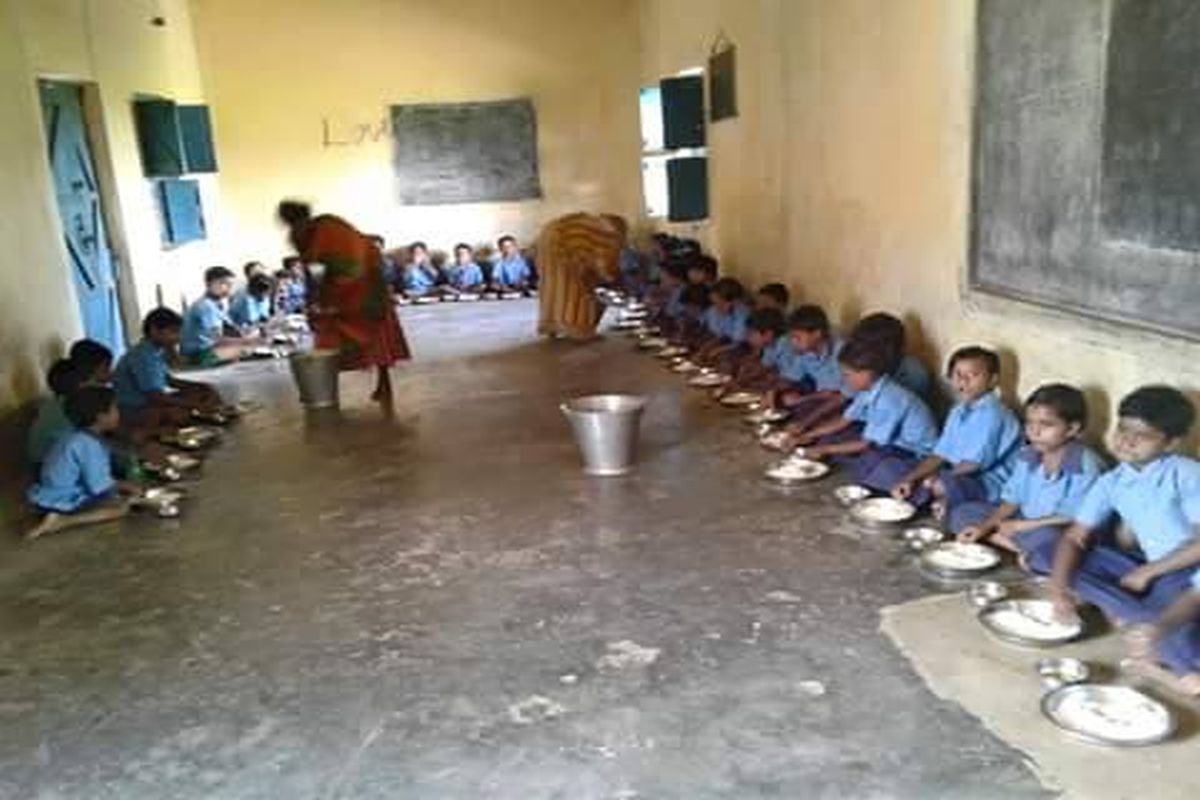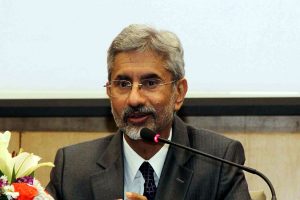The 86th amendment of the Constitution has made free and compulsory education a fundamental right for children in the age group of 6-14 years. India is also signatory to the Millennium Development Goals that were set during the UN Millennium summit on 8 September 2000. Going by the target, India was scheduled to achieve the goal of universal elementary education by the year 2015. Several schemes such as the Sarva Shiksha Abhiyan (SSA), National Literacy Mission and Operation Black Board have been started to achieve this objective. The National Programme of Nutritional Support to Primary Education, which is generally known as the “Mid-day Meal Scheme” was launched by the Government of India on 15 August 1995 to boost universalization of primary education and to improve the nutritional status of children.
The objective of the scheme is to increase enrolment, retention and the learning abilities of the beneficiaries, especially of children belonging to the poor and downtrodden sections of society and to provide a proper meal to school children. This, it was hoped, would promote friendship and a feeling of brotherhood among children belonging of different castes, colour and creed. So, the goals of social equity and gender equity are being realized with help of MDMs. Mid- Day Meal Scheme aims at overcoming the problem of classroom “hunger” which impedes an effective and efficient education system.
Advertisement
In a relatively short span of time, the mid-day meal has become integral to the daily school routine across the country. According to government report ,10.44 crore children benefit from the cooked meal in 12.12 lakh schools. There are 8.77 lakh kitchen-cum-stores, 24 lakh cooks-cum-helpers inducted from the Scheduled Castes, Tribes and OBCs. It is said to be the largest school feeding programme in the world. Towards achieving “Millennium Development Goals-India 2013”, a report states that the country in now well set to achieve cent per cent primary education for children in the age group of 6-10 years. DISE (District Information System on Education) 2010-11 reports that the Net Enrolment Ratio at the primary level is 99.89; it was 87.4 in 2004.
The Apparent Survival Rate (Ratio of enrolment in grade V to grade 1) is 82 for 2010-11. Gender party (ratio of girls to boys) in primary education reached the target value of 1 in 2008-09; it was 1.01 in 2010-11.MDM has been successful in inculcating hygienic habits like washing hands before and after meals and in educating them about the importance of clean water, proper environment and other related matters. By breaking the shackles of caste, creed and class among the children, the MDM has fostered the feeling of cooperation, coordination and fraternity, thereby leading to the development of a child’s personality. Psychological development of children is also ensured. Despite these achievements, there are many problems, in the implementation of this scheme.
A major drawback found in this scheme is that the teachers have to spend 2 or 3 hours for the implementation of this scheme. Because of the involvement of teachers, the study time of students and the quality of education suffer. The number of students in most of the government primary schools in rural areas is meagre. So the effectiveness of this scheme is also is stake. The avaibility of easy and good transportation system managed by the primary schools has adversely affected the number of students in government schools. The report of the Planning Commission on performance evaluation of the Mid-Day Meal Scheme suggests that the majority of states do not follow the guidelines of the Government of India to deliver foodgrain to the school via the PDS dealer.
This has resulted in leakage of the supply chain and adulteration and pilferage of foodgrain. Surveys have revealed that in most schools, the basic infrastructure for preparing meals was not available as per requirements. Some schools lack a proper kitchen, store rooms and clean water, adversely affecting the quality of the meal. To make MDM more effective and successful, it is imperative to ensure timely transfer of foodgrains to schools. Foodgrain record cards similar to the ration card can also be considered. FCI should be given the responsibility of colouring the foodgrain bags as mere stamping of the MDM logo is not a foolpoof arrangement. The time taken to transport foodgrain from the FCI godown should also be monitored and recorded. There is need to take very strict action against the official concerned as well as elected representatives who violate the guidelines.
More vegetables can be provided to improve the nutritional status of children. Kitchen gardens may be developed, including the plantation of fruit bearing trees like banana, guava, mango, papaya. The HRD ministry of HRD has also issued guidelines to ensure quality, safety and hygiene. This presupposes a management structure at various levels and the tasting of the meal by at least one teacher. It is the responsibility of the Headmaster to inform the District Education Officer/District Health Officer/ District Magistrate about shortcomings. The states should issue instructions for linkage with primary health centres or district hospitals to ensure early treatment of children.
Supreme Court commissions, 2010-11 have recommended that the provision for cooking costs under the mid-day meal should be increased. This should be based on the price index developed for the MDM to counter the effect of inflation. Priority should be given to disadvantaged communities, especially Dalits and Adivasis, in the appointment of cooks and helpers. All cooks and helpers should be paid not less than the statutory minimum wage. The role of NGOs has been commendable. Stern action should be taken in the event of any form of social discrimination in the mid-day meal scheme, notably discrimination against Dalit children or Dalit cooks.
For effective implementation of MDMs, all the functionaries involved in the scheme, need to be aware about nutrition, health hygiene and safety of food. Non-governmental organization, local youth and active social workers can also play a significant role in this scheme. Hence, quality of education and time span of teaching should not suffer. Adequate staff does not mean the provision of just one cook. The mid-day meal scheme of the country is the biggest such programme of the world and every effort must be done to make this scheme successful. Eventually, the success of the programme will depend on continued public participation and vigilance as well as sustained political interest. By educating every child, it becomes possible to rule out the difference between rural and urban India and to realize also the concept of “inclusive growth”.
(The writer is with the Eastern Institute for Integrated Learning in Management (EIILM), Kolkata)











